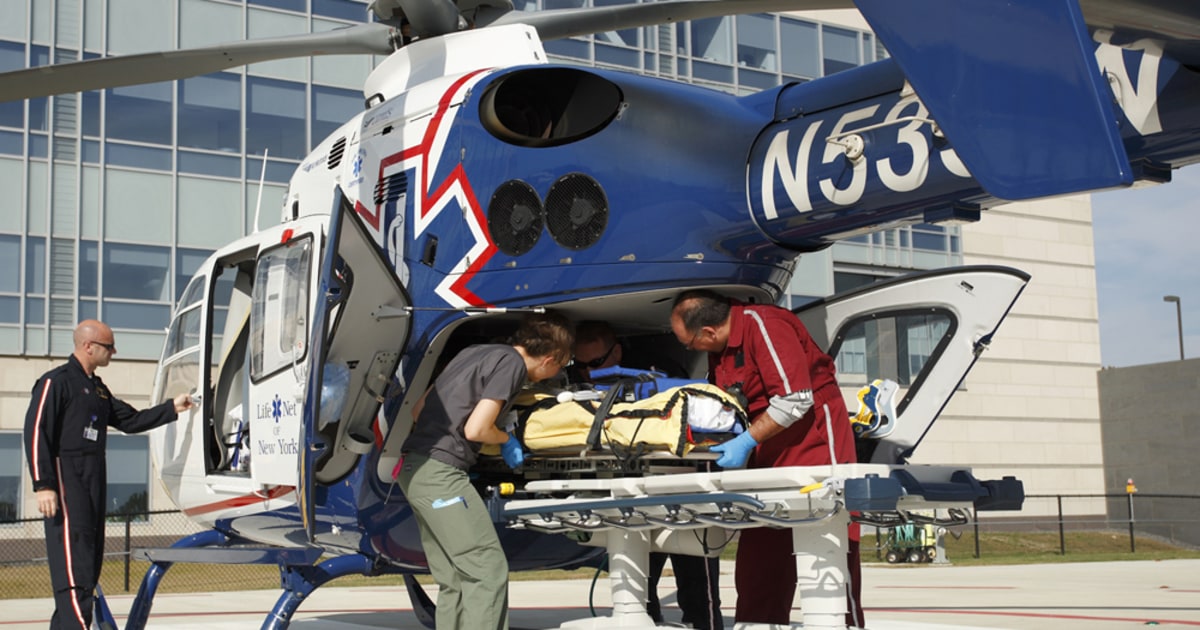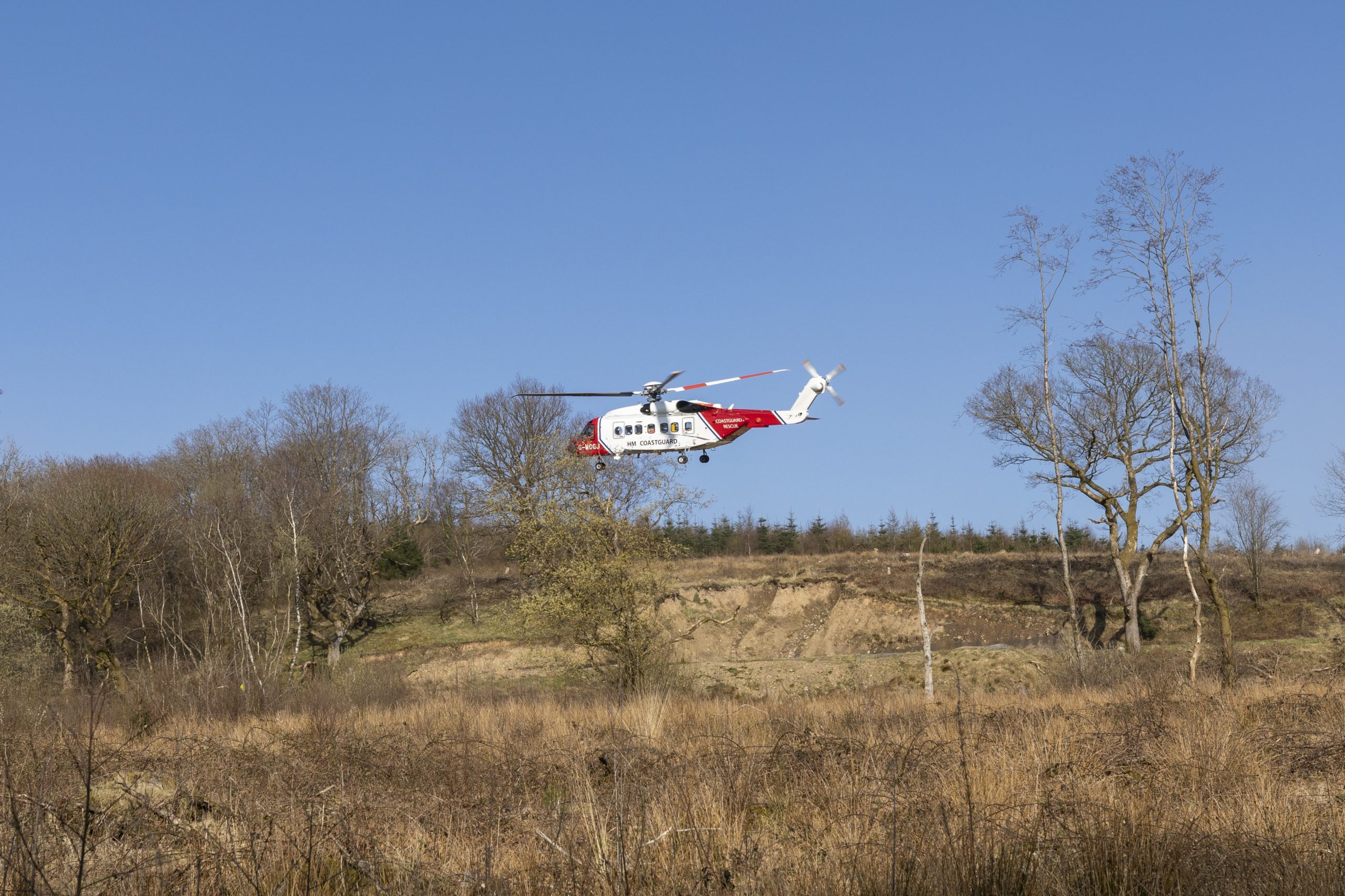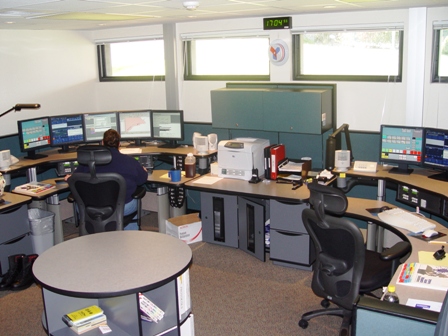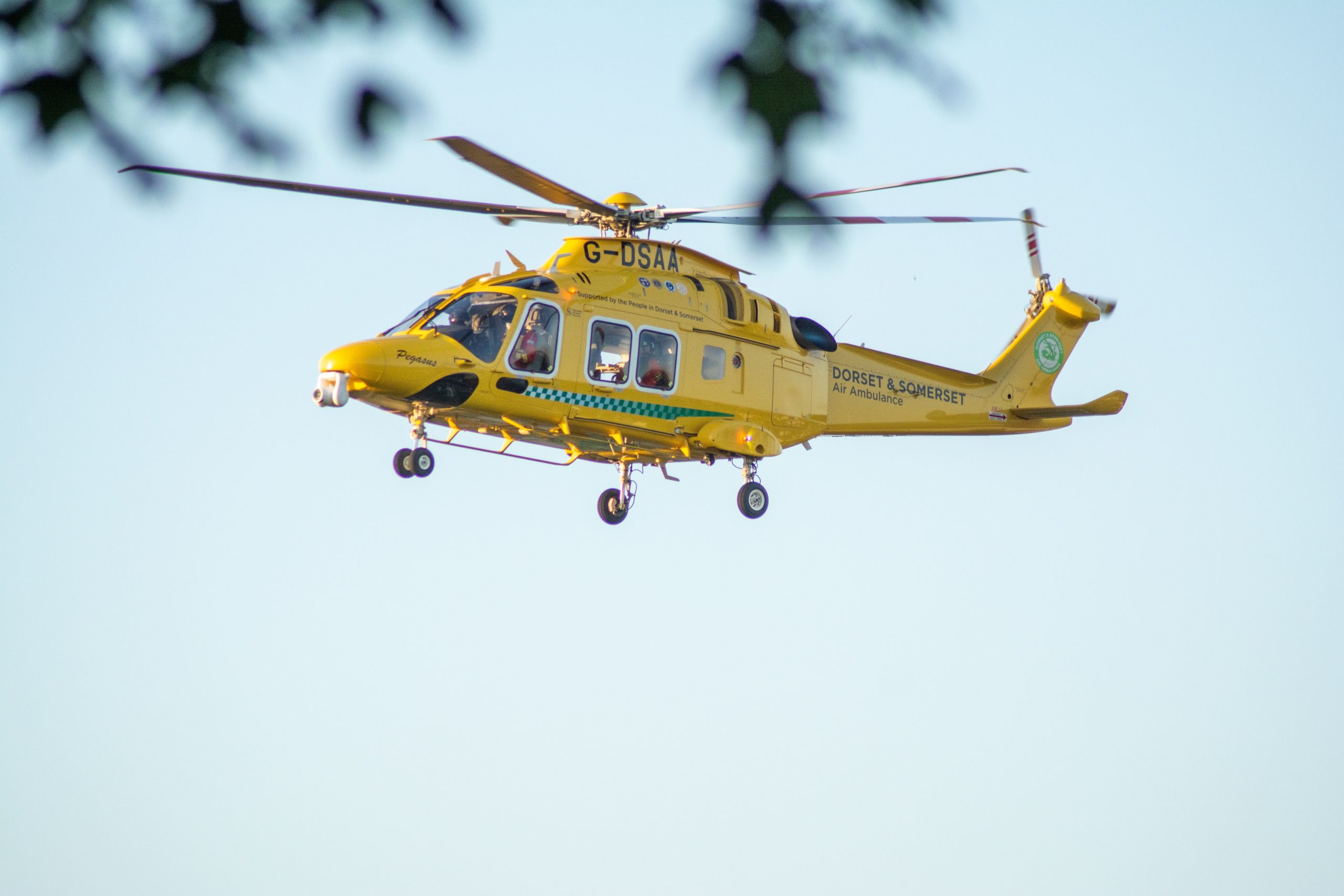Let’s talk about the weather challenges in air ambulance operations and why safety always comes first. When it comes to providing critical medical care during emergency situations, air ambulances play a vital role in transporting patients quickly and efficiently. However, adverse weather conditions can pose significant challenges and jeopardize the safety of both the patients and the medical crew. From strong winds to heavy fog or thunderstorms, pilots and medical professionals need to navigate through these weather obstacles with caution and expertise. In this article, we will explore the various weather challenges that air ambulance operators face and why prioritizing safety is of utmost importance in these life-saving operations.

Understanding the Impact of Weather on Air Ambulance Operations
Weather conditions play a crucial role in the safe and efficient operations of air ambulance services. From pre-flight planning to in-flight decision-making, meteorological information is a major factor that influences every aspect of air ambulance missions. It is essential for air medical crews to have a comprehensive understanding of how local weather conditions can impact their operations and the steps they can take to mitigate the risks associated with adverse weather.
Weather as a Major Factor in Air Ambulance Missions
When it comes to air ambulance operations, weather is not just a minor inconvenience but a critical determinant of the feasibility and safety of a mission. Adverse weather conditions can severely impact a helicopter or fixed-wing aircraft’s ability to navigate, maintain stability, and provide essential care to patients. Storms, fog, strong winds, heavy rain, and extreme temperatures all present unique challenges that air ambulance crews must be prepared to navigate.
The Role of Meteorological Information
Meteorological information is indispensable for air ambulance operations. It provides critical data on current weather conditions and forecasts, allowing air medical crews to make informed decisions regarding flight planning, route selection, and potential hazards. By understanding the role of meteorological information and effectively utilizing it, air ambulance services can optimize their operations while ensuring the highest level of safety for both patients and crew members.
Local Weather and Its Influence on Air Ambulance Operations
Local weather conditions directly impact air ambulance operations. Factors such as terrain, topography, temperature inversions, and proximity to bodies of water can affect visibility, aircraft performance, and response times. Crews must be familiar with the specific weather patterns and microclimates of their operational areas to adequately assess the risks associated with local weather conditions. Understanding how local weather influences air ambulance operations is vital for effective mission planning and decision-making.
Importance of Weather Assessment
A comprehensive pre-flight weather assessment is a fundamental step in air ambulance operations. Prior to takeoff, pilots and air medical crews must obtain a detailed weather briefing that includes the latest meteorological information relevant to their planned route. This briefing provides crucial data on current and forecasted weather conditions, allowing crews to assess potential risks and make informed decisions regarding flight operations.
Pre-Flight Weather Briefing
The pre-flight weather briefing serves as a primary source of meteorological information for air ambulance crews. It includes essential details such as temperature, wind speed and direction, cloud cover, visibility, precipitation, and any relevant information regarding potential hazards like thunderstorms or turbulence. By analyzing this information, crews can identify potential challenges and plan their routes accordingly.
How Weather Assessment Affects Decision-Making
Weather assessment has a direct impact on the decision-making process in air ambulance operations. Based on the information provided during the pre-flight briefing, crews must determine whether the weather conditions are suitable for the planned mission. Factors such as visibility, cloud height, wind speed, and turbulence all play a crucial role in determining whether it is safe to fly and provide the necessary care to patients.
Monitoring Weather Conditions During Flight
Weather conditions can change rapidly during a flight, and it is essential for air ambulance crews to continuously monitor and assess these changes. Real-time meteorological information is accessible through various sources, including weather radar, satellite imagery, and aircraft-mounted weather detection systems. By actively monitoring weather conditions during the flight, crews can make informed decisions regarding route adjustments, altitude changes, or even diverting to an alternative landing site if necessary.

Types of Weather-Related Challenges
Air ambulance crews face a diverse range of weather-related challenges, each requiring specific strategies to ensure safe and efficient operations. Understanding these challenges and developing effective mitigation strategies is crucial for air medical services.
Thunderstorms and Turbulence
Thunderstorms pose significant risks to air ambulance operations. Lightning, strong winds, and heavy precipitation can make flying extremely hazardous. Turbulence is also closely associated with thunderstorms and can cause aircraft instability and discomfort for both patients and crew members. Monitoring weather radar and prioritizing patient safety are vital when thunderstorms are present.
Low Visibility and Fog
Low visibility due to fog, mist, or low clouds is a common weather challenge for air ambulance crews. These conditions can significantly reduce the visibility range, making navigation and landing operations more challenging. Effective communication between pilots and air traffic control, as well as the use of instrument flight rules (IFR) when appropriate, are essential in ensuring safe operations during periods of reduced visibility.
High Winds and Crosswinds
Strong winds and crosswinds can create challenges during takeoff, landing, and flight operations. These weather conditions can affect aircraft stability, require adjustments to approach and departure angles, and impact landing site selection. Pilots must be skilled in crosswind landings and takeoff techniques, and careful consideration must be given to wind speed and direction when making critical decisions.
Heavy Rain and Precipitation
Heavy rain and precipitation can reduce visibility, impact aircraft performance, and create difficulties during landing and takeoff operations. Pilots must assess the intensity of rainfall and ensure that landing surfaces are not compromised by standing water or flooding. Monitoring and adjusting flight altitudes to avoid turbulent areas and properly coordinating with ground personnel are essential in mitigating risks associated with heavy rain and precipitation.
Extreme Temperatures and Altitude Effects
Extreme temperatures and altitude effects can impact aircraft performance and engine efficiency. High temperatures can reduce lift, limit engine power, and increase takeoff and landing distances. At high altitudes, reduced air density affects aircraft performance and may require adjustments in operational procedures. Special attention must be given to the impact of extreme temperatures and high altitudes on patients’ well-being and the aircraft’s ability to operate safely.
Mitigation Strategies for Weather Challenges
To minimize risks associated with weather challenges, air ambulance services employ a range of mitigation strategies.
Developing Standard Operating Procedures (SOPs)
Standard Operating Procedures (SOPs) outline specific guidelines and protocols for air ambulance crews to follow during various weather-related scenarios. SOPs address topics such as assessing weather conditions, determining acceptable weather limits, and making informed decisions based on meteorological information. Developing and regularly updating SOPs ensures consistency and safety across all air ambulance missions.
Enhancing Pilot Training and Competence
Pilot training plays a critical role in weather-related safety. Air ambulance pilots receive specialized training that covers adverse weather conditions, including thunderstorms, low visibility, high winds, and extreme temperatures. Ongoing training and competency assessments enable pilots to confidently navigate challenging weather situations and make appropriate decisions to ensure the safety of all stakeholders.
Utilizing Advanced Weather Forecasting Technologies
Advancements in weather forecasting technologies have significantly improved the accuracy and timeliness of meteorological information available to air ambulance crews. Access to real-time weather radar, satellite imagery, and computer models allows for more precise weather assessments and better-informed decision-making. By utilizing these advanced tools, air ambulance services can effectively plan and execute missions while minimizing risks associated with adverse weather conditions.
Collaborating with Meteorological Experts
Collaboration with meteorological experts can provide valuable insights and guidance to air ambulance services. Meteorologists specialized in aviation weather can interpret complex weather data and provide customized briefings and forecasts tailored to the specific needs of air medical crews. Building strong relationships with meteorological experts fosters a culture of safety and ensures that air ambulance services have access to the most accurate and reliable weather information.
Establishing Clear Communication Channels
Effective communication is essential in managing weather-related challenges. Air ambulance crews must maintain clear and open lines of communication with meteorological experts, air traffic control, and ground emergency medical services (EMS). Timely updates and relevant information regarding weather conditions enable crews to make well-informed decisions and facilitate coordination with all stakeholders involved in the transportation and care of patients.
Emergency Air Ambulance Services in Unfavorable Weather
In emergency situations, air ambulances may need to operate in less than ideal weather conditions. Various factors and considerations come into play when determining the feasibility of conducting missions in adverse weather.
Determining Acceptable Weather Limits
Air ambulance operators establish specific weather minimums for different types of aircraft and operational scenarios. These weather minimums serve as guidelines to determine whether it is safe to proceed with a mission. Factors such as visibility, cloud cover, wind speed, and precipitation influence the establishment of these limits. When the weather conditions fall below the acceptable thresholds, air ambulance operations may be delayed, rescheduled, or alternative transportation methods may be considered.
Emergency Landing Options and Alternatives
During adverse weather conditions, air ambulance crews must have contingency plans and clear protocols for emergency landings. It is vital to identify suitable landing areas within the operational radius that provide safe conditions for both the aircraft and the patient. Careful evaluation of the terrain, obstacles, and accessibility is essential to ensure a safe emergency landing if the need arises.
Coordination with Ground Emergency Medical Services (EMS)
Collaboration and coordination with ground-based EMS are crucial during unfavorable weather conditions. Air ambulance crews must work closely with ground EMS providers to assess the feasibility and safety of patient transfers. Communication channels must be established to exchange information regarding weather conditions, landing site availability, and ground transportation options to ensure a seamless continuum of care for patients.
Integrating Weather Observations in Real-Time Decision-Making
Real-time weather observations play a pivotal role in decision-making during emergency air ambulance services. Monitoring weather conditions and receiving updated information allows crews to adapt their plans and adjust their strategies accordingly. By integrating weather observations into their decision-making process, air ambulance crews are better equipped to optimize patient care, enhance safety, and minimize risks associated with adverse weather conditions.
The Role of Safety Management Systems (SMS)
Safety Management Systems (SMS) are an integral part of air ambulance operations and play a vital role in mitigating risks associated with weather challenges.
Implementing Risk Assessment Techniques
SMS frameworks facilitate the implementation of risk assessment techniques specific to weather-related challenges. Validating and continuously improving risk assessment procedures ensure that air ambulance crews can effectively identify, analyze, and mitigate potential hazards associated with adverse weather conditions. By incorporating these techniques into their operations, air ambulance services can proactively manage risks and safeguard patient and crew safety.
Continuous Improvement and Documentation
Continuous improvement and documentation are key components of an effective SMS. Regular evaluation and review of weather-related incidents and near misses enable air ambulance services to identify trends, implement corrective actions, and enhance their overall safety performance. Proper documentation also ensures that lessons learned from weather-related incidents are captured, shared, and incorporated into training and operational procedures.
Weather-Related Incident Reporting and Analysis
Incident reporting and analysis are fundamental elements of an SMS. Proper reporting of weather-related incidents, including near misses and accidents, provides valuable data for identifying systemic issues, improving safety practices, and implementing preventive measures. Thorough analysis of weather-related incidents helps identify contributing factors and enables air ambulance services to implement targeted risk mitigation strategies.
Human Factors and Decision-Making in Weather Challenges
Human factors play a significant role in decision-making during weather challenges. Pilots, air medical crews, and other relevant personnel must receive adequate training to understand the impact of human factors on decision-making processes. This training helps enhance situational awareness, improve judgment, and foster a safety culture that prioritizes the well-being of patients and crew members in adverse weather conditions.
Collaboration with Aviation Authorities and Regulatory Compliance
Air ambulance services must adhere to rigorous regulations and collaborate with aviation authorities to ensure compliance and safety.
Adherence to Federal Aviation Administration (FAA) Regulations
Air ambulance services must adhere to the regulations set forth by the Federal Aviation Administration (FAA). These regulations encompass various aspects of aviation safety, including weather-related guidelines and minimum standards. Compliance with FAA regulations ensures that air ambulance services operate within established safety parameters and provide the highest level of care during adverse weather conditions.
Coordination with Air Traffic Control (ATC)
Air ambulance crews work closely with air traffic control (ATC) to ensure safe and efficient operations, particularly during adverse weather conditions. Effective communication with ATC allows for real-time weather updates, adjustments to flight plans, and enhanced coordination between air and ground operations. Collaborating with ATC ensures a higher level of situational awareness and enables appropriate routing based on weather conditions.
Clearance and Operational Restrictions
During adverse weather conditions, air ambulance operations may be subject to clearance and operational restrictions. These restrictions may come from aviation authorities or air traffic control and are put in place to ensure the safety of flight operations. Air ambulance services must closely monitor these restrictions and work closely with regulators to navigate and comply with any applicable limitations.
Crisis Management and Preparedness
Crisis management and preparedness are integral components of air ambulance operations, particularly in the context of adverse weather conditions. Air ambulance services must have well-defined crisis management plans that consider potential weather-related emergencies. Preparedness training and regular drills ensure that all personnel are familiar with their roles and responsibilities during critical situations and enable them to respond effectively while prioritizing patient safety.
Case Studies on Weather-Related Air Ambulance Incidents
Analyzing past incidents provides valuable insights into the impact of adverse weather conditions on air ambulance operations and highlights the measures taken to mitigate risks.
Lessons Learned from Adverse Weather Scenarios
Reviewing case studies involving weather-related incidents provides valuable lessons for air ambulance services. Past incidents help identify potential hazards and risks associated with specific weather conditions and allow for the implementation of preventive measures. By learning from these lessons, air ambulance operators can continually improve safety practices and enhance their ability to operate efficiently in adverse weather.
Analysis of Accident Reports and Contributing Factors
Accident reports are valuable resources that provide in-depth analysis of weather-related accidents and their contributing factors. By examining accident reports, air ambulance organizations can identify common trends, system failures, and human factors that may have contributed to incidents. This analysis enables the development of targeted strategies to prevent similar incidents from occurring in the future.
Mitigating Risks and Implementing Preventive Measures
By studying weather-related incidents and accident reports, air ambulance services can develop effective risk mitigation strategies and implement preventive measures. These measures may include revisions to SOPs, enhanced crew training, improved collaboration with meteorological experts, and the use of advanced weather forecasting technologies. By actively addressing identified risks, air ambulance services can significantly reduce the likelihood of weather-related incidents and enhance safety outcomes.
Continuous Training and Professional Development
Air ambulance professionals must undergo continuous training and professional development to effectively manage weather-related challenges.
Weather-Related Training for Air Medical Crew
Air medical crew members must receive comprehensive training on weather-related challenges and their potential impact on air ambulance operations. This training provides crews with the knowledge and skills necessary to assess weather conditions, understand their implications, and make informed decisions. Regular training sessions ensure that air medical crews remain up-to-date with industry best practices and maintain competence in managing weather-related challenges.
Simulation Exercises and Scenario-Based Training
Simulation exercises and scenario-based training are effective tools for preparing air ambulance crews to handle adverse weather conditions. These training sessions allow crews to practice decision-making, communication, and emergency procedures in a controlled environment. By simulating realistic weather scenarios and challenging conditions, crews can improve their ability to react appropriately and maintain safety during actual operations.
Learning from Industry Best Practices
Staying informed about industry best practices is crucial for continuous improvement in air ambulance operations. Air ambulance services can learn from the experiences and successes of other organizations in effectively managing weather-related challenges. Benchmarking against industry leaders, participating in industry conferences and workshops, and engaging in professional networks provide opportunities to learn and adopt best practices.
Staying Updated with Regulatory Changes
Regulatory frameworks governing air ambulance operations are subject to change. Keeping abreast of regulatory updates and changes ensures that air ambulance services remain compliant with the latest requirements. Close collaboration with aviation authorities and active participation in industry associations and working groups help air ambulance services stay updated on evolving weather-related regulations and standards.
Conclusion: Prioritizing Safety in Air Ambulance Operations
Weather challenges pose significant risks to air ambulance operations. Understanding the impact of weather conditions and implementing appropriate strategies to mitigate these risks is crucial for ensuring the safety of patients and crew members. Through effective weather assessment, collaboration with meteorological experts, and adherence to regulatory requirements, air ambulance services can optimize their operations and provide critical care to those in need, even in challenging weather conditions. Prioritizing safety in air ambulance operations ensures that patients receive timely and life-saving interventions while minimizing the risks associated with adverse weather.



